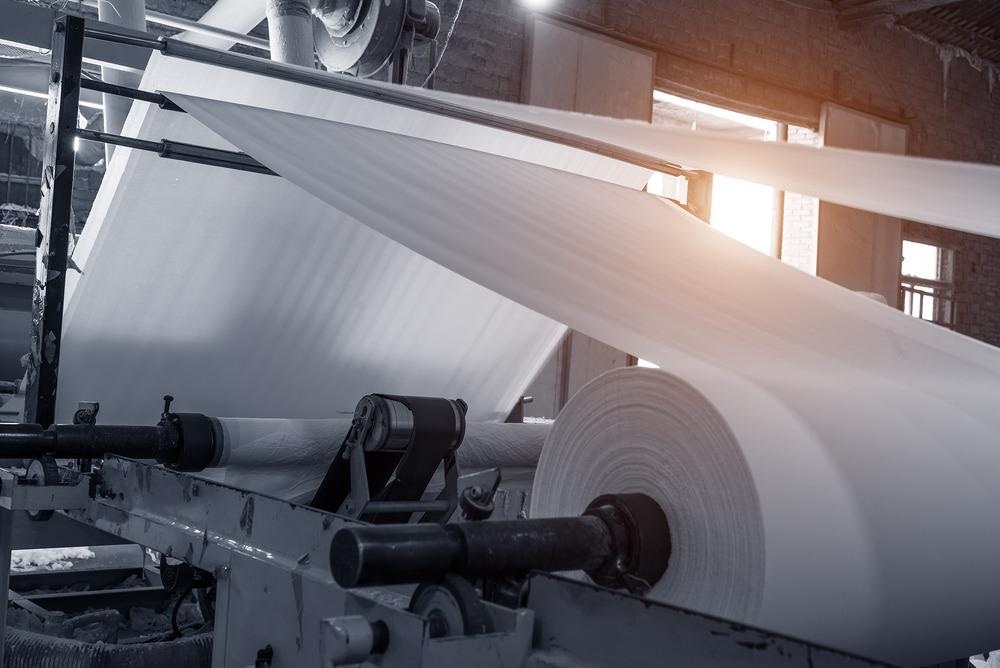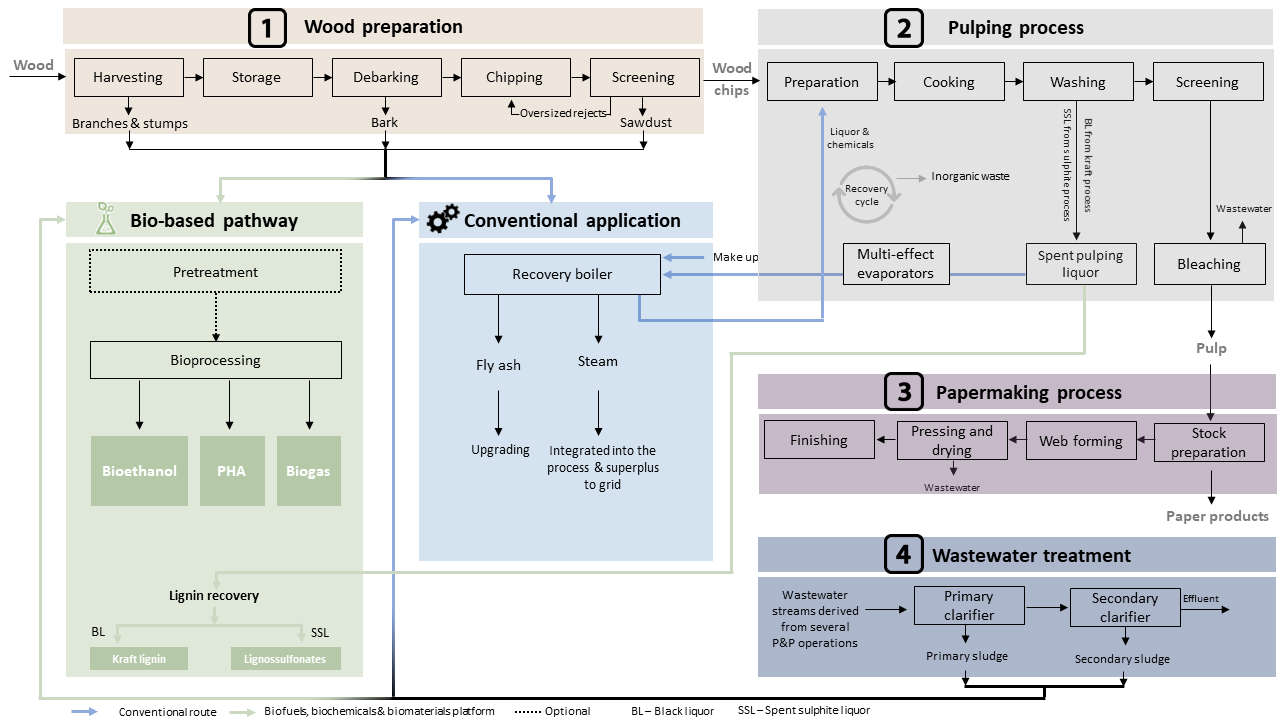Scientists from the University of Aveiro and the University of Coimbra in Portugal have evaluated strategies for improving the circularity of the pulp and paper industries. Their findings have been published in a new paper in the journal Energies.

Study: Getting Value from Pulp and Paper Industry Wastes: On the Way to Sustainability and Circular Economy. Image Credit: hxdyl/Shutterstock.com
The Circular Economy Model
Population growth, changing consumption patterns, and increasing industrialization have led to a growing climate emergency. Greenhouse gas emissions and vast quantities of generated waste have caused ecological damage on a historically unprecedented scale, and recent extreme weather events are seemingly the tip of the iceberg.
The circular economy model has been widely proposed in several industries to address current climate concerns. In this concept, waste is recycled and reused, turned into value-added products. Compared to the currently open and linear model of production, a circular manufacturing model is a closed-loop system with zero waste.
A circular economy model of production confers several benefits over traditional linear manufacturing. Firstly, it negates the exploitation of virgin resources and raw materials by utilizing waste streams. Secondly, it reduces waste generation, avoiding the environmental damage caused by dumping and incineration. Thirdly, it reduces carbon emissions and saves money.
When products are disposed of and not recycled, the valuable resources within those products are lost. Adopting a cyclical model of production and waste management recovers these commercially valuable materials and reuses them for new products.
The Paper and Pulp Industries
The paper and pulp industries can benefit greatly from a cyclical model of manufacture. These industries are responsible for the consumption of most of the lignocellulosic biomass produced in the world. In 2020, the European paper and pulp industries alone consumed an estimated 146.5 million cubic meters of wood. The transition to a green economy approach is a chief concern in these industries.
Annually, these industries generate an estimated eleven million tons of waste in Europe alone. These waste streams include sawdust, bark, sludge, and spent processing liquors. The potential use of these waste products for applications such as biofuels, materials, and industrial chemicals has led to research focusing on improving the circularity of the paper and pulp industries.
To successfully recover these waste streams and valorize them to produce new products, a deep understanding of structural and chemical composition is essential. These waste streams are extremely complex in nature, and the challenges associated with their recovery and reuse have facilitated intense research focused on recycling and processing strategies.
The Study
The new study in Energies has reviewed current state-of-the-art approaches within the pulp and paper industries to achieve a cyclical approach to waste utilization for value-added bioproducts. Production of bioethanol, biogas, and less studied bioproducts such as PHA has been highlighted in the review as suitable routes to waste valorization and circularity.
Over two hundred papers have been reviewed and analyzed by the authors, covering various technical, experimental, and economic aspects of circularity in the pulp and paper industries. These previous studies have analyzed multiple strategies for biomass conversion to valuable commercial products such as biofuels.

Simplified flowsheet of the wood preparation, pulping, papermaking process and wastewater treatment processes.Image Credit: Amândio, M.S.T et al., Energies
Based on their review, the authors have stated that valorizing waste streams within a biorefinery concept is a promising approach to improving the circularity of these industries. The paper and pulp industries are at an advantage for achieving circularity due to already established logistics, services, and industrial facilities. This will help them more easily integrate a biorefinery approach into their operations.
Products that Can be Valorized
Many by-products of the paper and pulp industries are valorized for numerous applications. Sawdust, for example, can be used in construction or, commonly, as an energy source for industrial processes in the industry, reducing the need for fossil fuels. Sustainable domestic heating pellets are also produced from this waste resource.
From a biorefinery perspective, many by-products can be recovered to produce biofuels and chemicals. Bark, for instance, can be chemically treated to recover valuable extractives. Sugars can be recovered from spent sulfite liquor for microbial bioprocessing methods. This by-product can also be used in the production of hydrogen, bioethanol, and PHA.
Other useful by-products include black liquor, pulp, and paper sludge, and wastewater residues. Contaminants and inorganic compounds can be present in residues, sludge, and liquors, which facilitate specific processing protocols. Research is ongoing into new processes to improve resource recovery from the various waste by-products of paper and pulp production.
Future Perspectives
Several challenges still need to be overcome in these industries to improve cellulosic bioethanol and chemical production. For instance, waste materials can possess low sugar contents, which increases the resource needs and associated costs with downstream processing. Another challenge is the insufficient fermentation of hexoses and pentoses by microorganisms. Toxic by-products can also be present.
The authors have suggested that one strategy to overcome current limitations is the use of co-production methods within multi-product biorefineries. This can offset increased capital and production costs. Furthermore, there is scope for improving flexibility and providing alternative revenue streams in the paper and pulp industries. Finally, government incentives can play a key role in improving circularity.
Further Reading
Amândio, M.S.T et al. (2022) Getting Value from Pulp and Paper Industry Wastes: On the Way to Sustainability and Circular Economy Energies 15(11) 4105 [online] mdpi.com. Available at: https://www.mdpi.com/1996-1073/15/11/4105
Disclaimer: The views expressed here are those of the author expressed in their private capacity and do not necessarily represent the views of AZoM.com Limited T/A AZoNetwork the owner and operator of this website. This disclaimer forms part of the Terms and conditions of use of this website.